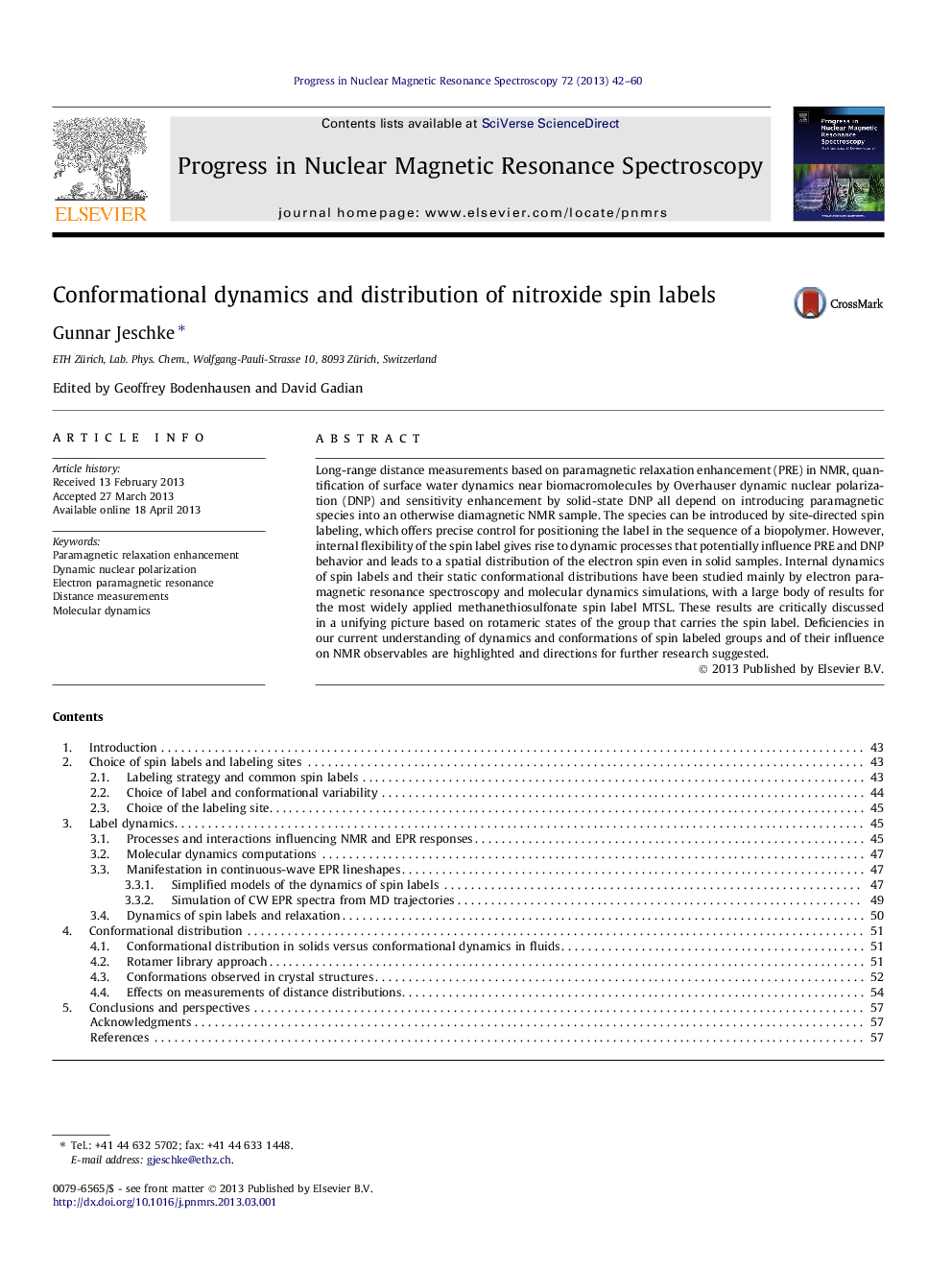| Article ID | Journal | Published Year | Pages | File Type |
|---|---|---|---|---|
| 5419557 | Progress in Nuclear Magnetic Resonance Spectroscopy | 2013 | 19 Pages |
â¢Thorough discussion of dynamic processes relevant for NMR and EPR response.â¢Assessment of limitations in current theoretical and computational descriptions.â¢Experimental and theoretical results on dynamics rationalized by rotamer transitions.â¢Unified discussion of liquid-state dynamics and solid-state conformation distribution.â¢Assessment of prediction accuracy for mean spin label position.
Long-range distance measurements based on paramagnetic relaxation enhancement (PRE) in NMR, quantification of surface water dynamics near biomacromolecules by Overhauser dynamic nuclear polarization (DNP) and sensitivity enhancement by solid-state DNP all depend on introducing paramagnetic species into an otherwise diamagnetic NMR sample. The species can be introduced by site-directed spin labeling, which offers precise control for positioning the label in the sequence of a biopolymer. However, internal flexibility of the spin label gives rise to dynamic processes that potentially influence PRE and DNP behavior and leads to a spatial distribution of the electron spin even in solid samples. Internal dynamics of spin labels and their static conformational distributions have been studied mainly by electron paramagnetic resonance spectroscopy and molecular dynamics simulations, with a large body of results for the most widely applied methanethiosulfonate spin label MTSL. These results are critically discussed in a unifying picture based on rotameric states of the group that carries the spin label. Deficiencies in our current understanding of dynamics and conformations of spin labeled groups and of their influence on NMR observables are highlighted and directions for further research suggested.
Graphical abstractDownload high-res image (196KB)Download full-size image
